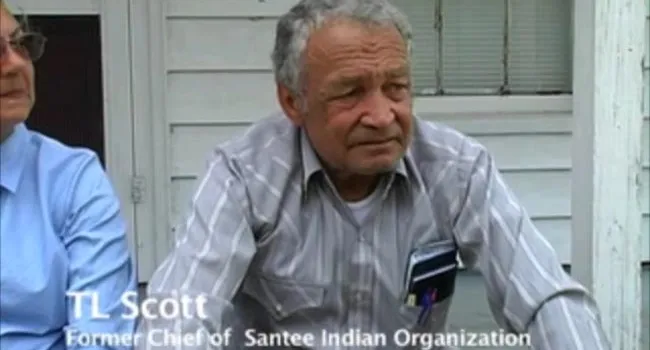Kaltura
T.L. Scott, the former Chief of Santee Indian Organization talks about his family's community store. T.L. Scott speaks about being treated "almost normal" compared to the blacks in the area.
Standards
- 5-3 The student will demonstrate an understanding of major domestic and foreign developments that contributed to the United States becoming a world power.
- 5-4 The student will demonstrate an understanding of American economic challenges in the 1920s and 1930s and world conflict in the 1940s.
- 5-5 The student will demonstrate an understanding of the social, economic and political events that influenced the United States during the Cold War era.
- 8.5.CC Analyze the continuities and changes in South Carolina's identity resulting from the civic participation of different individuals and groups of South Carolinians.
- This indicator was developed to encourage inquiry into civic engagement, such as military service, public demonstrations, and political activism, to shape the identity of modern South Carolina. This indicator was also written to encourage inquiry into South Carolinians' use of the court system and legislation to affect South Carolina's post World War II identity.
- 8.5.CX Analyze the correlation between the Modern Civil Rights Movement in South Carolina and the U.S.
- This indicator was designed to foster inquiry into the role of South Carolina in the Modern Civil Rights Movement, to include the influence of court cases such as Briggs v. Elliot and Flemming v. South Carolina Electric and Gas. This indicator was also developed to promote inquiry into the relationship between national leadership, protests, and events and South Carolina leadership, protests and events, such as the Friendship Nine and the Orangeburg Massacre.
- 8.5.E Utilize a variety of primary and secondary sources to analyze multiple perspectives on the cultural changes in South Carolina and the U.S.
- USHC.5.CC Evaluate continuities and changes during the Civil Rights Movement and other subsequent movements for equal rights.
- This indicator was developed to promote inquiry into thematic continuities and changes into how marginalized groups sought and won legal rights. Inquiry into the leadership, methods, and outcomes of modern equal rights movements are supported by this indicator.















